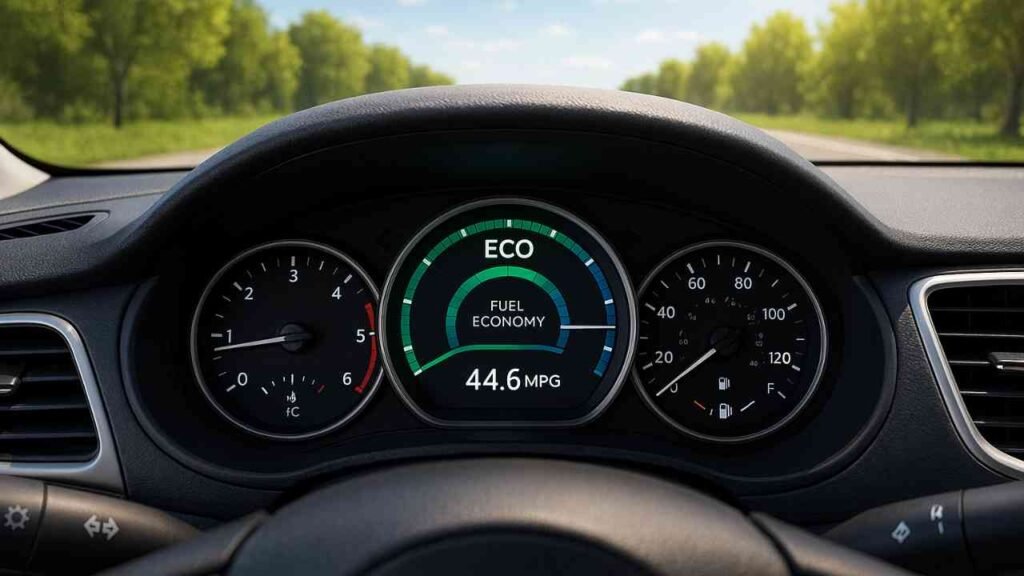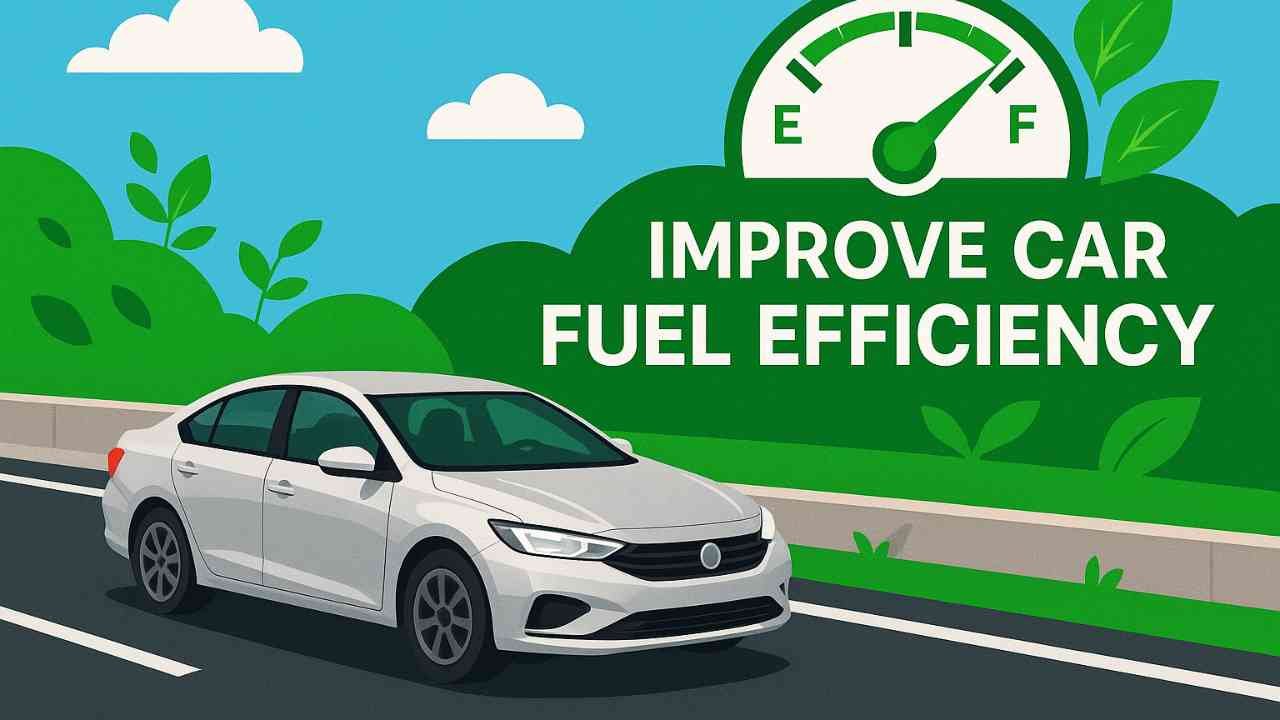Introduction
Fuel efficiency is an essential aspect of owning a car. With rising fuel prices and increasing environmental concerns, maximizing your car’s fuel efficiency can save you money and reduce your carbon footprint. Fortunately, improving your vehicle’s fuel economy doesn’t always require expensive upgrades. Small, consistent changes to your driving habits and regular maintenance can make a significant impact. In this guide, we’ll walk you through practical and easy-to-implement tips that will help you get more miles out of every gallon of fuel.
Drive Smoothly and Avoid Aggressive Driving

The Importance of Smooth Driving:
One of the most effective ways to improve fuel efficiency is to change the way you drive. Aggressive driving behaviors such as speeding, rapid acceleration, and hard braking can cause a significant drop in fuel economy. These actions force the engine to work harder, wasting fuel and increasing emissions.
By adopting a smooth, steady driving style, you can reduce fuel consumption and improve overall efficiency. Here’s how:
- Avoid sudden acceleration: Gradually pressing the accelerator instead of flooring it allows the engine to work efficiently, saving fuel.
- Brake gently: Try to anticipate traffic signals and slow down gradually instead of slamming on the brakes at the last second. This minimizes the energy used in decelerating and helps save fuel.
- Maintain consistent speed: Avoid frequent speeding up and slowing down, which can be wasteful.
Keep Tires Properly Inflated
Tire Pressure and Fuel Efficiency:
It might seem like a minor detail, but keeping your tires properly inflated is crucial for fuel efficiency. Under-inflated tires create more rolling resistance, forcing your engine to use more energy to move the vehicle. Studies show that a tire that is just 10% under-inflated can reduce fuel efficiency by up to 2%.
To maintain proper tire pressure:
- Check tire pressure regularly: Tires should be inflated to the level recommended by the manufacturer. This information can be found in your car’s manual or on a label inside the driver’s door frame.
- Do it when tires are cold: The best time to check tire pressure is in the morning or when the car has been idle for several hours. This ensures the tires are at their lowest temperature and provides the most accurate reading.
Properly inflated tires not only improve fuel efficiency but also enhance safety and tire longevity, so make it a habit to check tire pressure every month.
Use Cruise Control on Highways
Cruise Control for Better Mileage:
When driving on highways or long, straight stretches of road, using cruise control can help improve your fuel efficiency. Cruise control maintains a consistent speed, reducing the need for acceleration and braking, which leads to better gas mileage. This is especially effective when driving at steady highway speeds.
However, it’s important to use cruise control wisely:
- Avoid using cruise control on hilly terrain: On inclines, your car may struggle to maintain speed and end up using more fuel. Cruise control is most effective on flat, straight roads.
- Use it at consistent speeds: Aim to maintain a steady, optimal speed for fuel efficiency, typically between 45-65 mph, depending on your vehicle.
Remove Unnecessary Weight
Lighten Your Load:
Another simple yet impactful tip is to remove unnecessary items from your car. Every extra pound your vehicle carries requires more energy to move, which results in increased fuel consumption.
- Empty your trunk: If you have a heavy load in your trunk that you’re not using regularly, take it out. Excess weight can add up, especially if you’re carrying items that aren’t essential for your daily driving.
- Remove roof racks when not in use: Roof racks or carriers create extra wind resistance, making the engine work harder and reducing fuel efficiency. If you’re not carrying cargo, take the roof rack off.
- Avoid overloading: Check your vehicle’s weight limit and avoid exceeding it, as too much weight impacts the suspension and fuel economy.
Limit Use of Air Conditioning
AC and Fuel Consumption:
Air conditioning (AC) is one of the biggest culprits of reduced fuel efficiency, especially when driving at lower speeds. While it’s tempting to blast the AC on a hot day, it puts extra strain on the engine and uses more fuel.
Here’s how you can manage AC use efficiently:
- Use AC sparingly: If driving at lower speeds, consider using the car’s ventilation system instead of the AC. At higher speeds, the AC’s impact on fuel efficiency is less noticeable, so it’s okay to use it more.
- Keep windows up: When driving at highway speeds, keeping your windows up is more fuel-efficient than having them open. Open windows increase drag and reduce the car’s fuel efficiency.
Follow the Recommended Maintenance Schedule
Routine Maintenance for Fuel Efficiency:
One of the simplest and most effective ways to ensure your car runs efficiently is by adhering to the manufacturer’s recommended maintenance schedule. Regular maintenance not only improves your car’s performance but also boosts fuel economy.
- Regular oil changes: Oil lubricates the engine, reducing friction and improving efficiency. Old, dirty oil can cause the engine to work harder, wasting fuel.
- Change air filters: A clogged air filter reduces airflow to the engine, making it work harder and using more fuel. Replacing air filters regularly can improve fuel efficiency by up to 10%.
- Check spark plugs: Faulty or worn-out spark plugs can cause your engine to misfire and waste fuel. Replacing spark plugs ensures that your engine runs efficiently.
Use the Right Fuel
Fuel Type Matters:
Using the correct type of fuel for your vehicle is another essential factor in fuel efficiency. While most vehicles run fine on regular unleaded gas, some high-performance cars require premium fuel to operate efficiently.
- Follow the manufacturer’s recommendations: Check your vehicle’s manual for the recommended fuel type. Using premium fuel in a car designed for regular fuel doesn’t improve fuel efficiency—it just costs you more money.
- Consider ethanol-blended fuels: Some vehicles are designed to run on ethanol-blended fuel, which may cost less per gallon but can reduce fuel efficiency. Always check the manufacturer’s guidelines.
Limit Idle Time
Don’t Idle for Long Periods:
Idling is a common habit that wastes fuel. Whether you’re waiting in a drive-thru or stuck in traffic, your engine burns fuel even when your car isn’t moving.
- Turn off the engine if you’ll be idle for more than a minute: Restarting your car uses less fuel than idling for long periods. If you’re going to be stopped for more than a couple of minutes, it’s better to turn the engine off.
Drive at the Right Speed
Speed and Fuel Economy:
Driving at higher speeds consumes more fuel. For optimal fuel efficiency, aim to drive within the recommended speed limits for fuel economy, which is generally between 45-65 mph.
- Avoid rapid acceleration: Accelerating quickly consumes more fuel. Gradually increasing speed helps improve fuel efficiency.
- Don’t exceed speed limits: Driving faster than the optimal fuel-efficient speed can increase wind resistance and fuel consumption.
Conclusion
Improving your car’s fuel efficiency is achievable with small, everyday adjustments to your driving habits and maintenance routines. By following these simple tips, you can reduce fuel consumption, save money, and contribute to a cleaner environment. Whether it’s smooth driving, proper maintenance, or managing your car’s weight, every little change adds up to significant savings at the pump.
